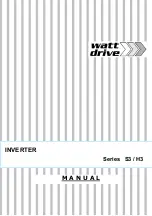
SGSM
5.1 M8 cable specifications
Model: LIKA HI-FLEX M8 type cable
Wires: 6 x 0.14 mm
2
+ 2 x 0.22 mm
2
Shield: Tinned copper braid
External diameter: Ø 5.3 mm ÷ 5.6 mm
Impedance: 6 x 148
/Km, 2 x 90
/Km
Min. bend radius: Ø x 7.5
5.2 M12 8-pin connector
Male, frontal side
A coding
5.3 GND connections
Minimize noise by connecting the shield to ground.
Make sure that ground is not affected by noise.
6 - Output signals
Standard counting direction
Figure 7 - Example with interpolation factor 4x
A positive increment of the signal values (the rising
edge of channel A leads the rising edge of channel
B) is carried out by rotating the magnetic ring
clockwise when the sensor and the ring are
mounted as shown in Figure 1 (see the arrow).
The number of pulses is proportional to the
mechanical travel as the frequency is proportional
to the rotation speed of the magnetic ring.
As the sensor reads the magnetic ring whilst it
turns, it detects the displacement and issues an
output signal equivalent to the one of an
incremental encoder or a linear scale. The output
signal frequency is proportional to the measuring
speed while the number of output pulses is
proportional to the mechanical displacement of the
ring.
The order code indicates the interpolation factor, if
you want to know the number of edges per
revolution (intended after multiplying by 4),
multiply the interpolation factor by the number of
magnetic poles in the magnetic ring.
The number of edges per revolution results from:
interpolation * number of ring poles
EXAMPLE
SGSM-Y-2-
64
-… interpolation factor = 64
MRI/72-
64
-3-...
64 magnetic poles
Hence:
64 * 64 = 4,096 edges per revolution
Encoder PPR result from the following calculation:
Encoder PPR = edges/rev. = 4,096 = 1,024 PPR
4
4
MAN SGSM I_E 1.5.odt
13
www.lika.it
www.lika.biz


































